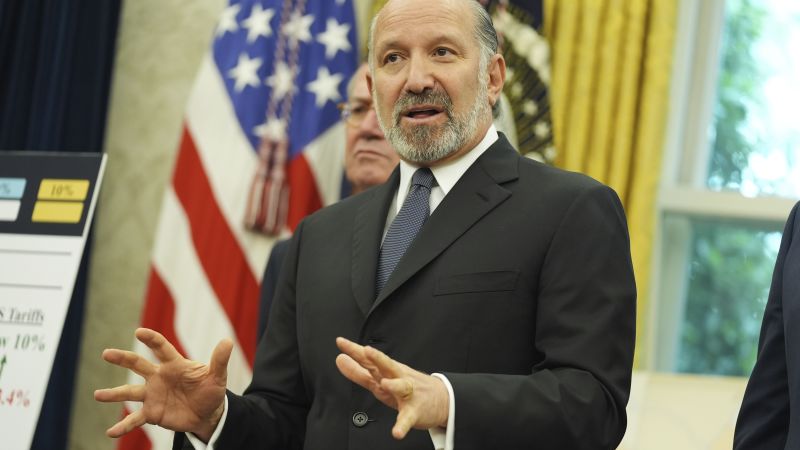In an ambitious new initiative designed to attract foreign investment, U.S. Commerce Secretary Howard Lutnick announced the upcoming introduction of a “gold card” visa. This visa is aimed at foreign nationals who are willing to invest a substantial $5 million, granting them the right to live and work permanently within the United States. This proposal was presented during Axios’ “Building the Future” event, which took place in Washington, D.C. on a Wednesday, reflecting the ongoing commitment of the current administration to stimulate economic growth through immigration.
As Lutnick elaborated on the initiative, he revealed that an official website, presumably titled ‘TrumpCard.gov’, is expected to launch shortly, in roughly one week. This platform will facilitate the registration process for interested parties. He assured attendees that detailed information regarding the program will follow soon after the site goes live, providing clarity to potential applicants about the steps involved in securing this new visa.
The announcement also highlighted the intended replacement of the EB-5 immigrant investor visa program. Under the existing EB-5 program, foreign investors can obtain green cards through investments of $1.8 million or $900,000 in economically distressed areas. The new “gold card” is designed to simplify and elevate the investment threshold while maintaining similar intended benefits, such as residency privileges. This transition from the former program emphasizes a shift towards more significant financial contributions from investors, underscoring a potential strategy to bolster national economic fortitude.
Lutnick expressed optimism regarding the program’s reception, citing his recent trip to the Middle East where he noted substantial interest among potential applicants. He described encounters where he was actively promoting the visa, suggesting a broad allure among wealthy individuals seeking opportunities in the U.S. “Basically, everyone I meet who is not an American is going to want to buy this card if they have the fiscal capacity,” Lutnick stated, emphasizing the high demand anticipated from this demographic.
The concept of the “gold card” visa was initially articulated by former President Donald Trump during a speech in February. Trump underscored the financial implications of this initiative, proclaiming that for a fee of $5 million, applicants would obtain not only green card privileges but potentially a pathway to citizenship as well. His remarks indicated a broader strategy to entice affluent individuals into the U.S., thereby fostering both population growth and economic stimulation through their investments.
While the initiative may ostensibly appear attractive, legal experts have highlighted crucial concerns surrounding its implementation. In order to create and enact this new visa category, Congressional approval is necessary, raising questions about the feasibility of such an aggressive immigration policy. The dependence on legislative approval underscores the complexities involved in immigration reform, particularly in a politically charged climate.
Lutnick further advocated for the economic potential of the program, suggesting that it could assist in mitigating the U.S. federal debt, which has surpassed the staggering figure of $36 trillion. He effectively framed the immigration of wealthy individuals as a solution to fiscal challenges, stating that if 200,000 investors purchase the visa, this could theoretically generate a trillion dollars in revenue. This influx could support various governmental operations and infrastructure needs, reflecting a broader vision for economic recovery fueled by immigration.
In summary, the proposed “gold card” visa has surfaced as a significant economic initiative aimed at attracting necessary foreign investment into the United States. As stakeholders await further developments and official announcements regarding the program, it remains to be seen how this proposal will unfold and its subsequent reception across the nation. The dual focus on financial contributions and immigration policy reform encapsulates a complex interplay of interests that embodies the current administration’s vision for America’s economic future.
Contributions to this report were made by CNN journalists Michael Williams, Piper Hudspeth Blackburn, and Catherine E. Shoichet, highlighting the collaborative effort in presenting a comprehensive view of this evolving situation.



